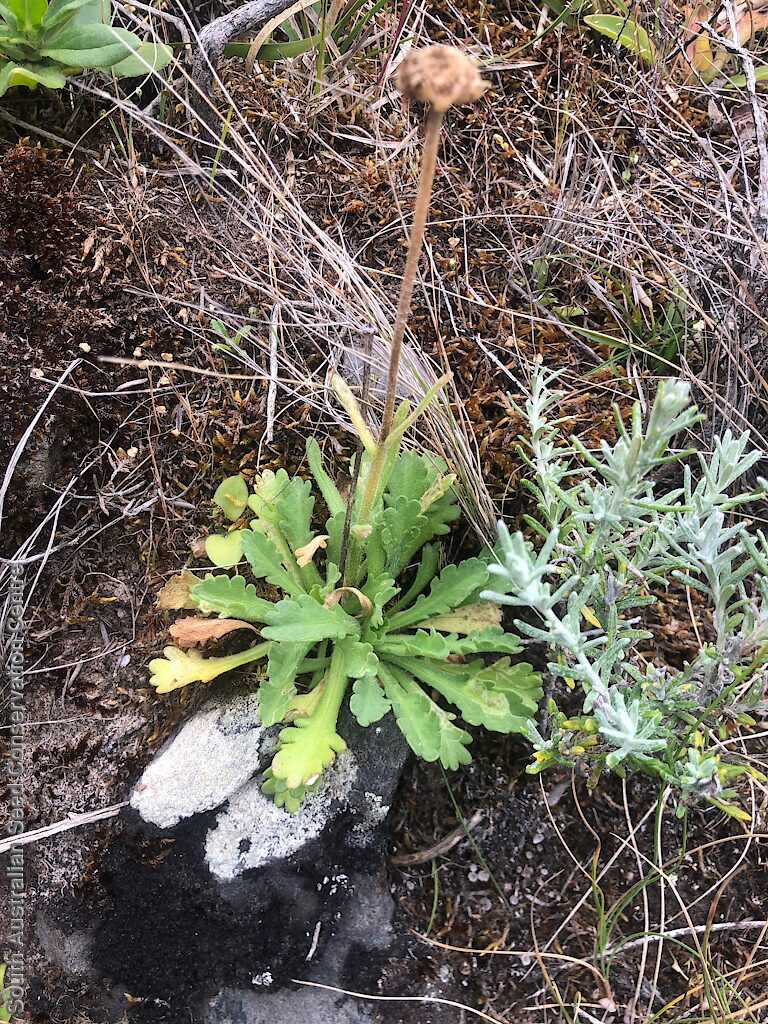
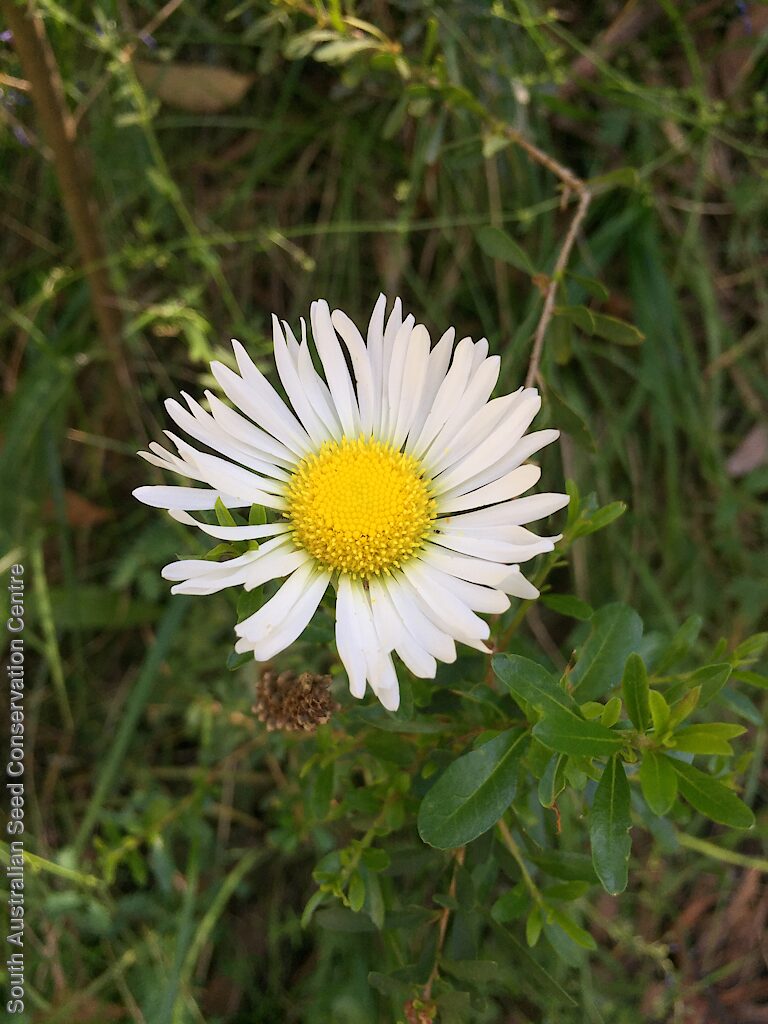
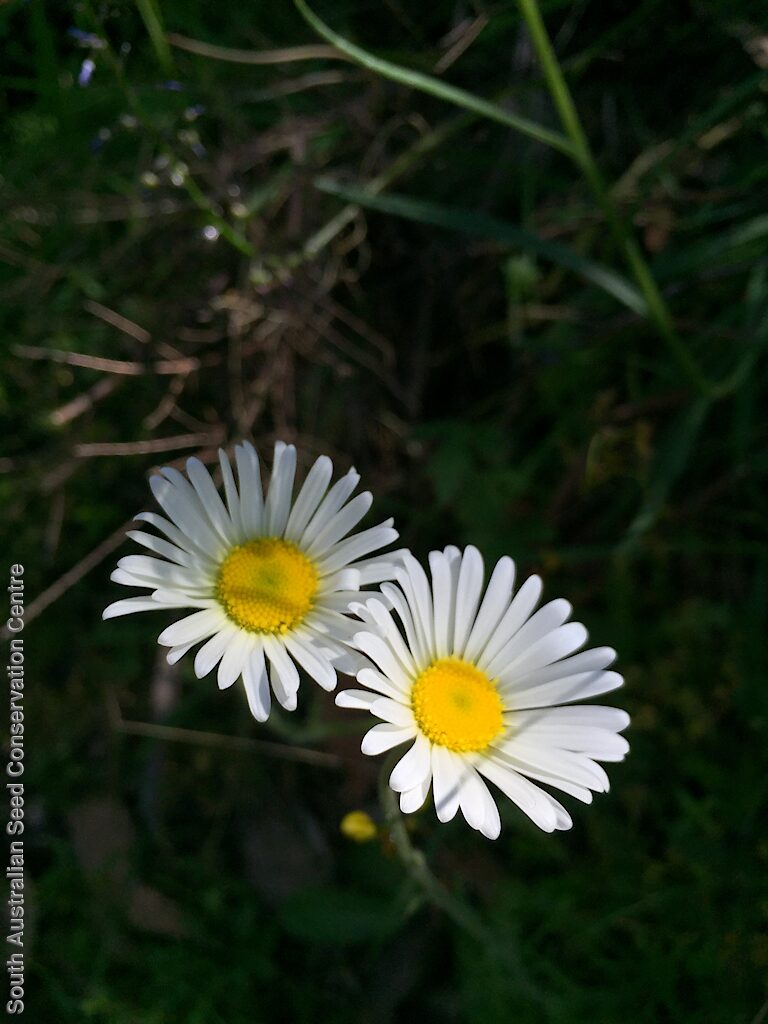
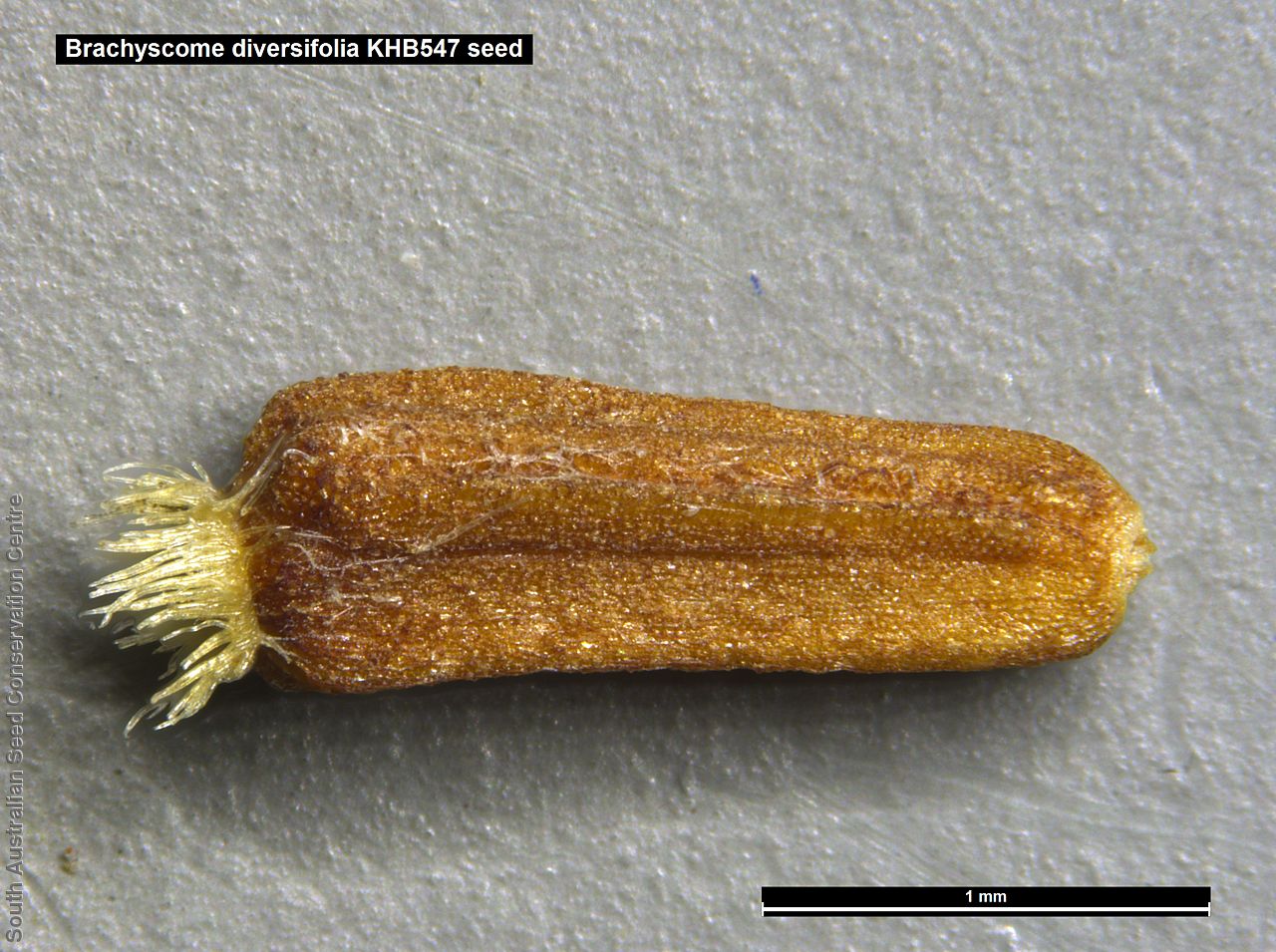
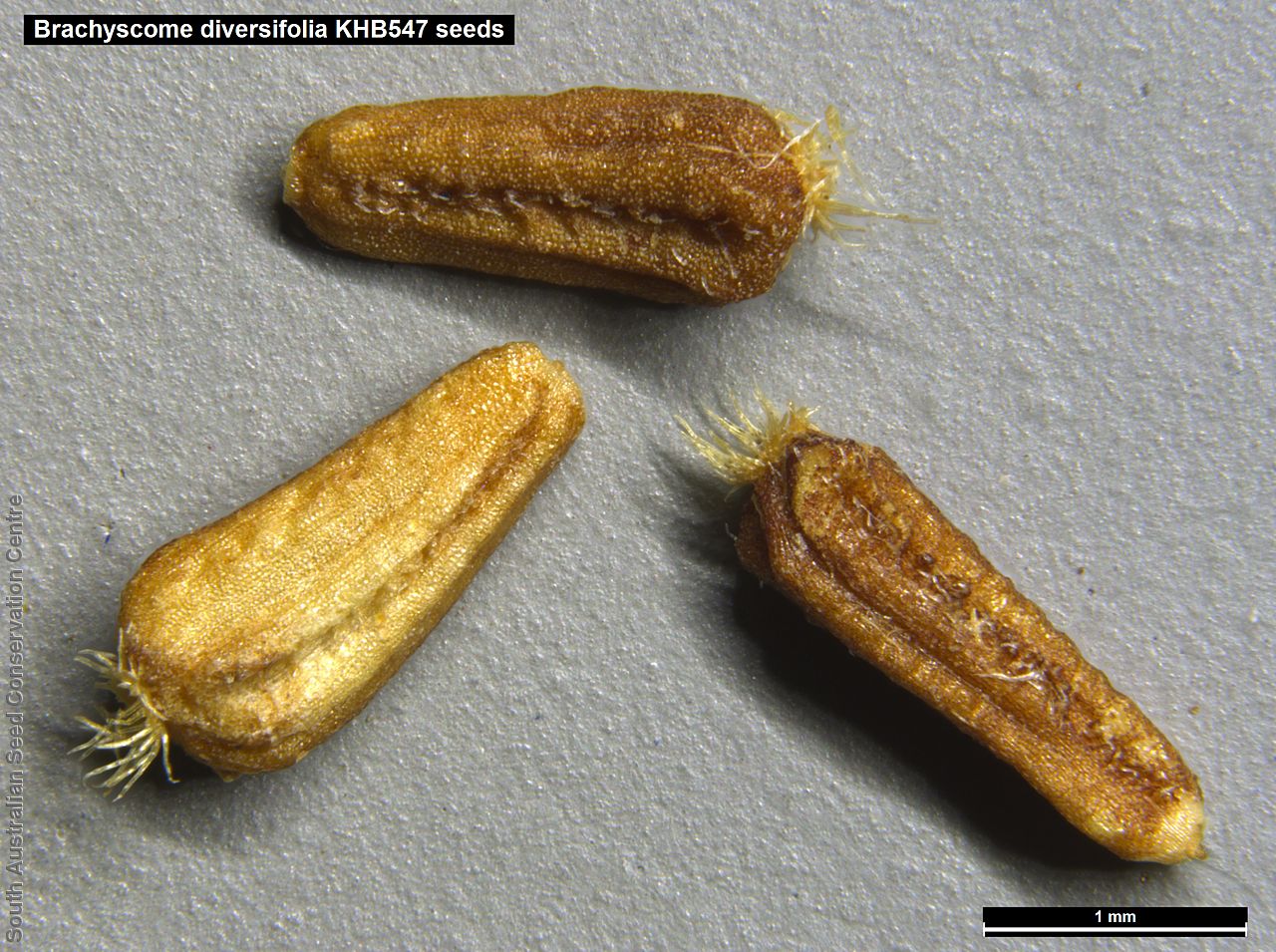
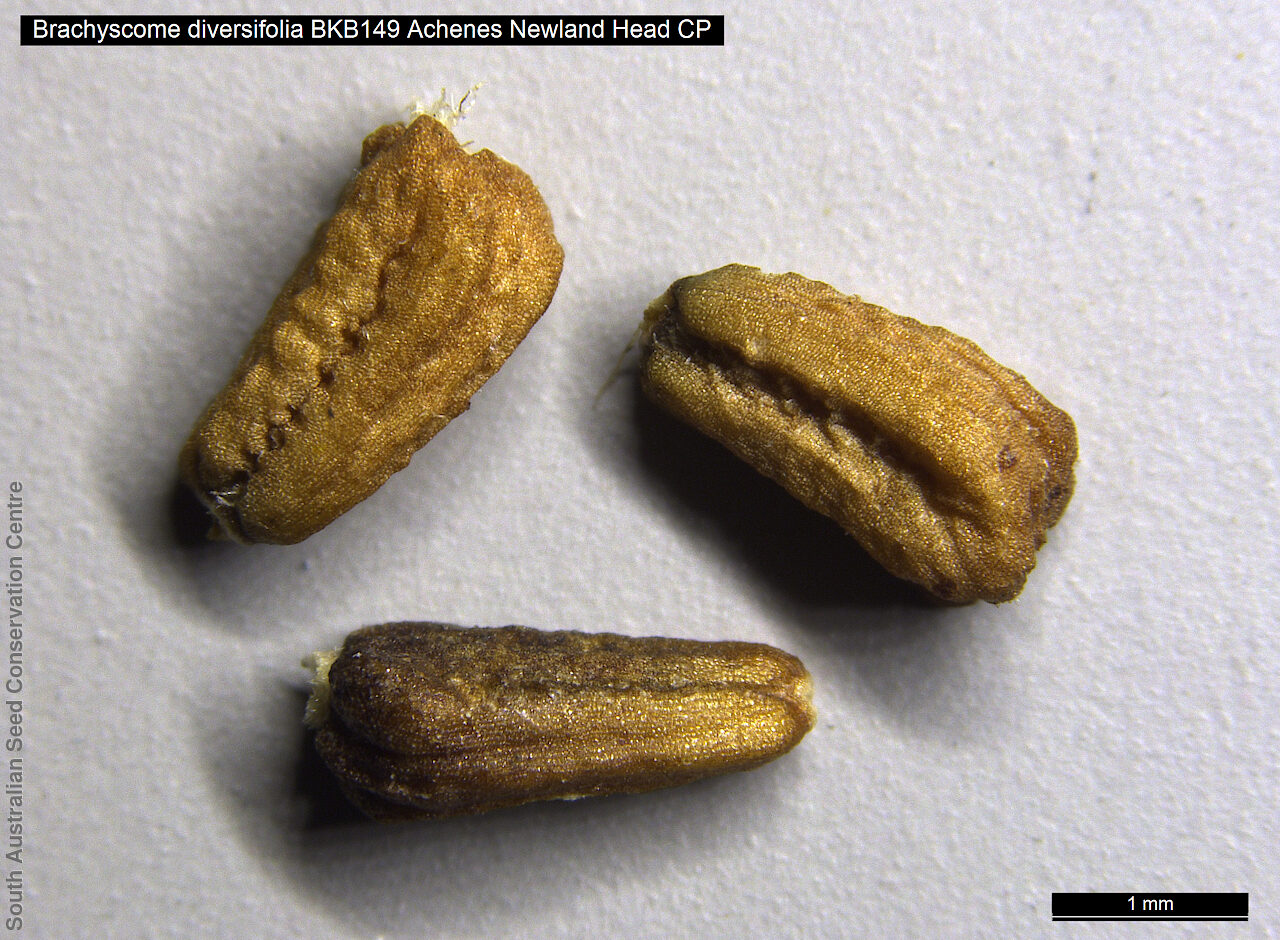
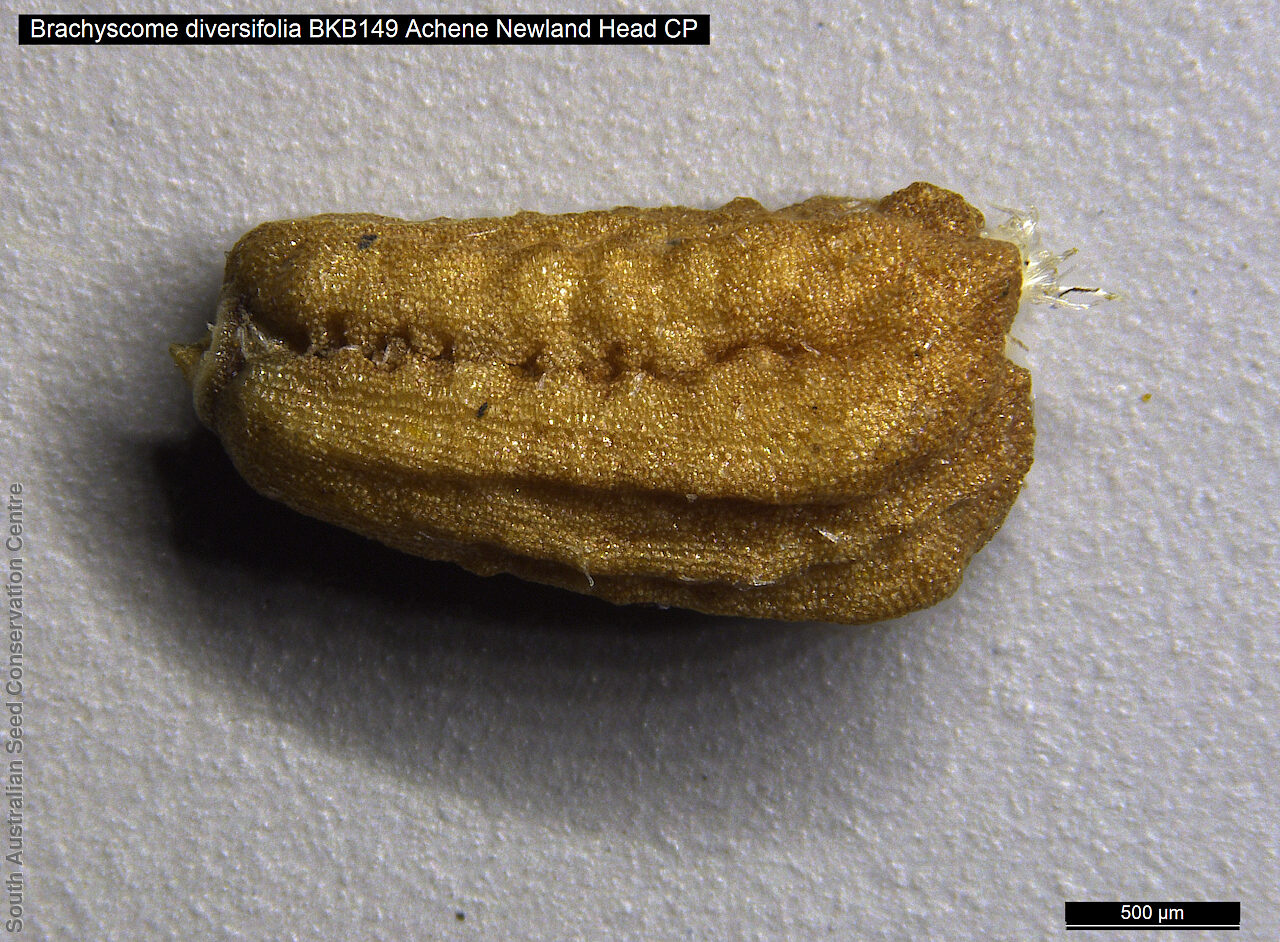
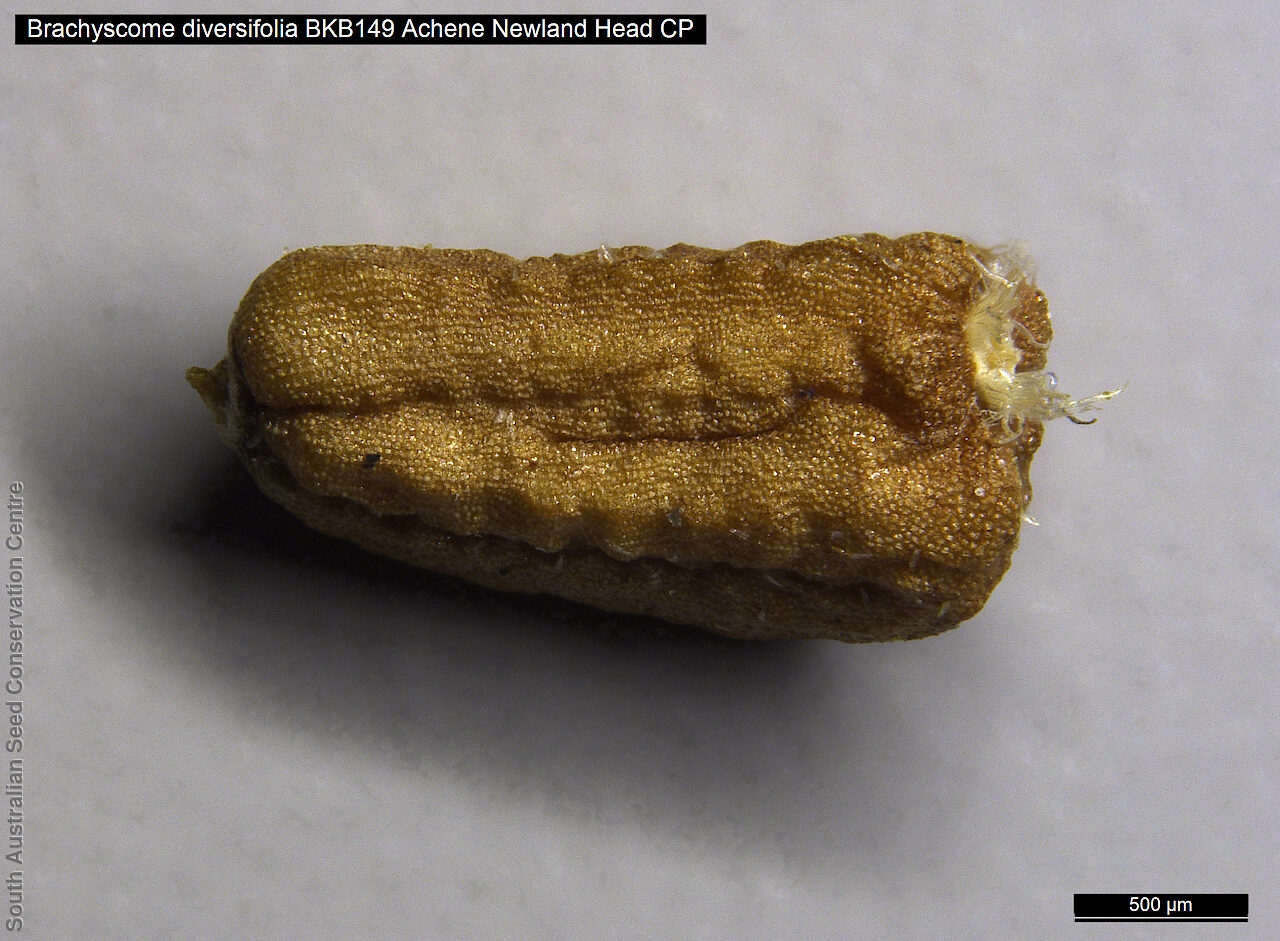



Botanical art
Prior names
Pyrethrum diversifolium
Brachycome diversifolia var. diversifolia
Common names
Tall Daisy
Large-head Daisy
Etymology
Brachyscome from the Greek 'brachys' meaning short and 'kome' meaning hair, referring to the tuft of short bristles or hairs of the pappus. Diversifolia from the Latin 'diversus' meaning different and 'folium' meaning leaf, referring to the species having different shaped leaves on the same plant.
Distribution and status
Found in a few sites in the southern Mount Lofty Ranges in South Australia, growing in forest and along gullies. There is an old collection (1934) from the South-east around Lucindale but this population has not been relocated. Also found in Queensland, New South Wales, Victoria and Tasmania. Native. Very rare in South Australia. Common in the other States.
Herbarium regions: Southern Lofty, South Eastern, Green Adelaide
NRM regions: Adelaide and Mount Lofty Ranges, South East
AVH map: SA distribution map (external link)
Plant description
Erect perennial daisy growing to 50 cm tall with hairy serrated basal leaves. Flowers single large white daisy on a long stalk. Flowering between October and November. Fruits are dried daisy-heads containing numerous seeds. Seeds are rectangular brown seeds to 3.2 mm long and 0.5 mm wide, with short hairs at one end. Seed embryo type is spatulate fully developed.
Seed collection and propagation
Collect seeds between October and December. Collect heads that are drying off and turning brown. The hard brown seeds should dislodge easily. Place the heads in a tray and leave to dry for a week. Then rub the heads gently with your hands to dislodge the seeds. Use a sieve to separate the unwanted material. Store the seeds with a desiccant such as dried silica beads or dry rice, in an air tight container in a cool and dry place. Seed viability can be average to high. This species has physiological dormancy that need to be overcome for the seed to germinate.
| Location | No. of seeds (weight grams) | Number of plants | Date collected | Collection number Collection location | Date stored | % Viability | Storage temperature |
|---|---|---|---|---|---|---|---|
| BGA | 2,300 (0.72 g) | 1-Nov-2006 | RJB70311 Southern Lofty | 1-Aug-2007 | 75% | +5°C, -18°C | |
| BGA MSB | 5,500 (1.9 g) 2,411 (0.82 g) | 50 | 16-Nov-2006 | PJA138 Southern Lofty | 1-Aug-2007 | 55% | +5°C, -18°C |
| BGA | 1,300 (0.35 g) | 10 | 24-Nov-2006 | PJA139 Southern Lofty | 1-Jun-2010 | 85% | -18°C |
| BGA | 1,700 (0.76 g) | 20-Nov-2008 | PJA188 Southern Lofty | 1-Jan-2012 | 90% | -18°C | |
| BGA | 7,025 (1.75 g) | 20-Nov-2009 | PJA187 Southern Lofty | 1-Jan-2012 | -18°C | ||
| BGA | 660 (0.27 g) | 25-Nov-2009 | PJA202 Southern Lofty | 2-May-2017 | 100% | -18°C | |
| BGA | 19,800 (9.17 g) | 3-Nov-2010 | KHB547 Southern Lofty | 28-Jun-2021 | 85% | +5°C, -18°C | |
| BGA | 2,200 (1.410 g) | 50 | 23-Dec-2020 | TST1464 Southern Lofty | 28-Jun-2021 | 90% | -18°C |
| BGA | 30,000 (16.280 g) | 100 | 9-Dec-2021 | TST1481 Southern Lofty | 7-Jul-2022 | 80% | -18°C, -80°C |
| BGA | 1,500 (0.626 g) | 10+ | 9-Nov-2021 | TST1464 Southern Lofty | 7-Jul-2022 | 100% | -18°C |
| BGA | 11,500 (6.154 g) | 50+ | 9-Dec-2021 | TST1464 Southern Lofty | 20-Jun-2023 | 100% | -18°C, -80°C |
| BGA | 1,445 (1.068 g) | 20+ | 6-Dec-2022 | BKB149 Southern Lofty | 20-Jun-2023 | 90% | -18°C |
Number of plants: This is the number of plants from which the seeds were collected.
Collection location: The Herbarium of South Australia's region name.
% Viability: Percentage of filled healthy seeds determined by a cut test or x-ray.